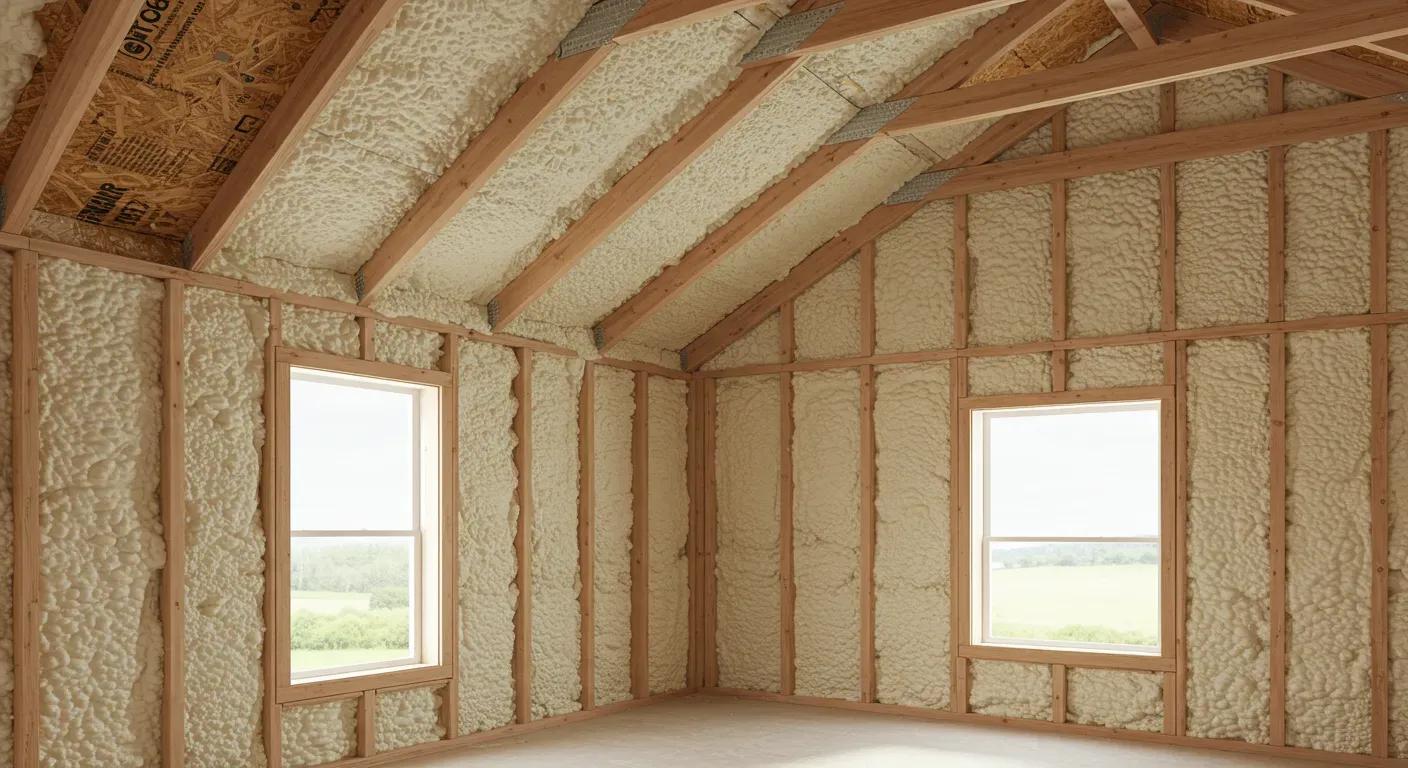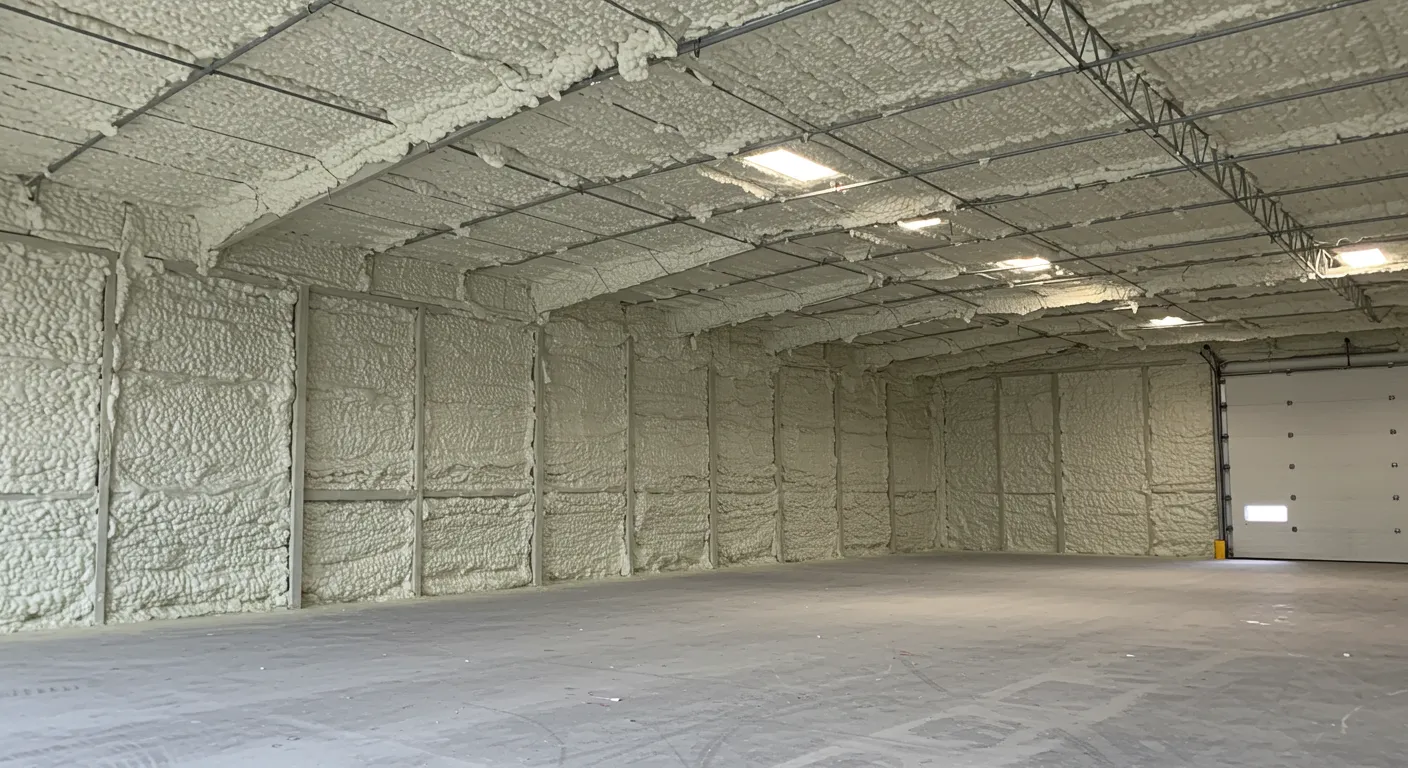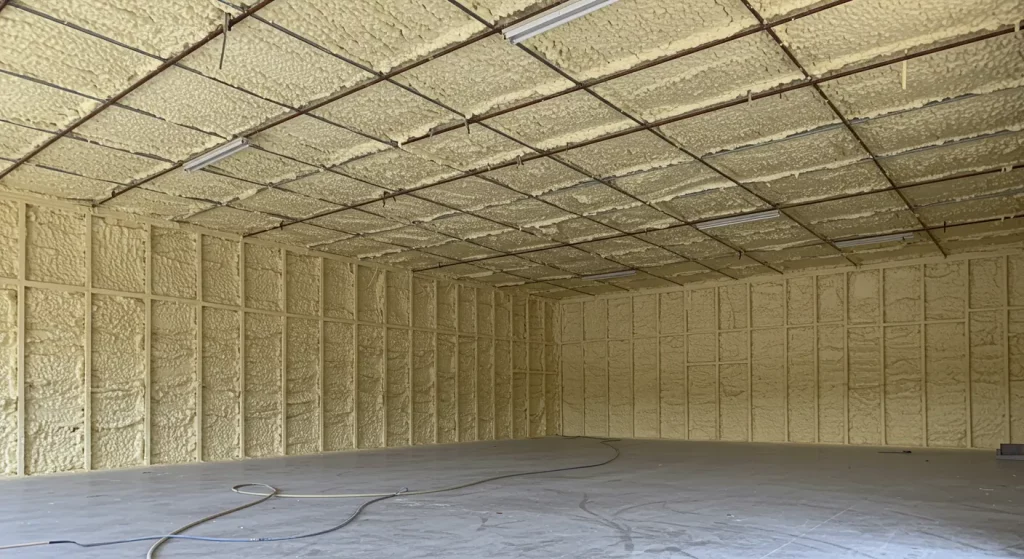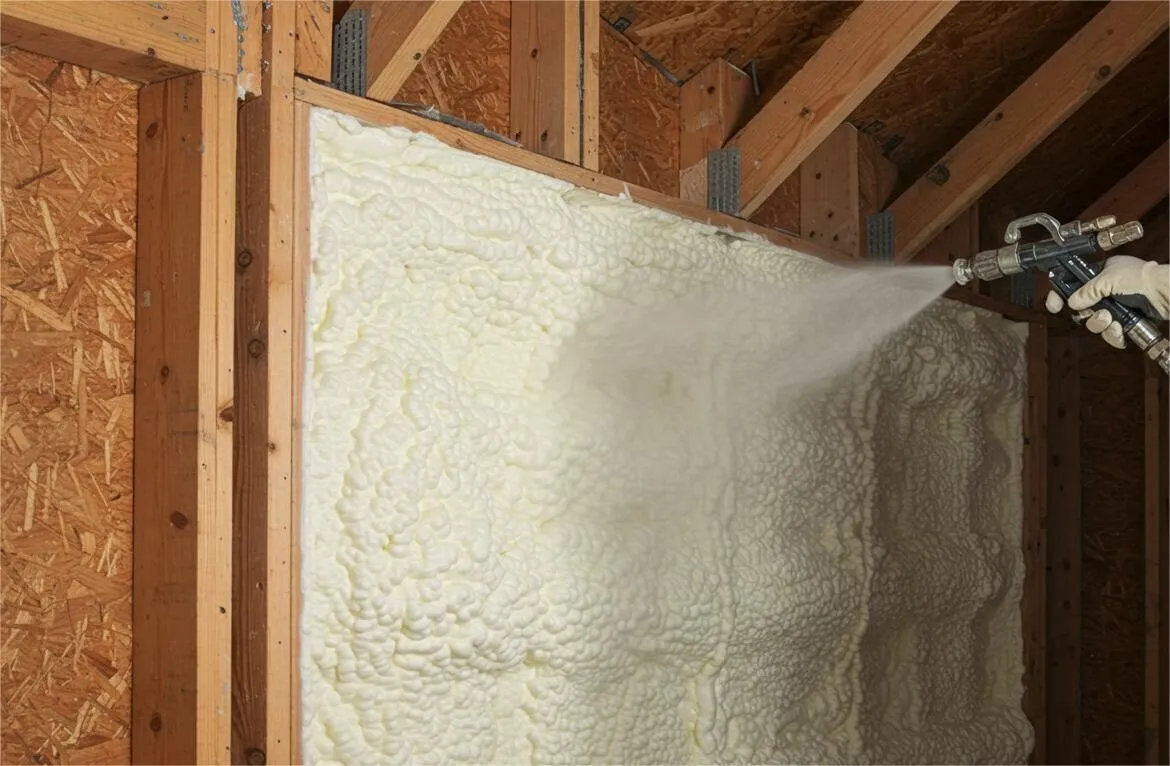

Commercial spray foam is a smart investment for Seattle businesses due to its superior thermal performance, moisture resistance, and long-term cost savings. In Seattle’s damp, temperate climate, where heating demands outweigh cooling, insulation choices have a direct impact on operational efficiency and structural durability. Spray foam provides a high R-value per inch and creates an air seal that minimizes heat loss and moisture intrusion—issues that frequently affect buildings in the Pacific Northwest.
Compared to traditional insulation materials, spray foam reduces HVAC strain, prevents mold risk, and lowers monthly energy expenses. These outcomes are critical for commercial buildings with high energy loads or sensitive inventory. This article presents firsthand experience with commercial installations, region-specific technical considerations, and data-supported insights to help Seattle business owners make informed insulation decisions.
Seattle’s high annual rainfall and moderate winters create unique insulation challenges. Materials must resist moisture, prevent thermal bridging, and contribute to indoor air stability.
| Feature | Spray Foam (Closed-Cell) | Fiberglass Batts | Mineral Wool | Rigid Foam Board |
|---|---|---|---|---|
| R-Value per Inch | 6.5-7.0 | 2.9-3.8 | 3.0-4.2 | 4.5-5.0 |
| Moisture Resistance | Excellent | Poor | Moderate | Good |
| Air Seal | Yes | No | No | Partial |
| Mold Resistance | High | Low | High | Moderate |
| Longevity (Years) | 30–50 | 10–25 | 20–30 | 20–40 |
| Maintenance Requirement | Minimal | Moderate | Low | Moderate |

The insulation system’s effectiveness depends on installation quality, material density, and the building envelope.
| Specification | Open-Cell Foam | Closed-Cell Foam |
|---|---|---|
| Density | ~0.5 lb/ft\u00b3 | 1.75–2.2 lb/ft\u00b3 |
| R-Value (per inch) | 3.5–3.7 | 6.5–7.0 |
| Water Permeability | Permeable | Low permeability |
| Air Barrier | Partial | Complete |
| Structural Reinforcement | No | Yes |
| Best Use Case | Interior walls, sound | Exterior walls, roof |
Bonus Tip: Closed-cell foam is recommended for Seattle’s exterior commercial walls and roofs where wind-driven rain and persistent humidity are concerns.
Data from the U.S. Department of Energy indicates that buildings with spray foam insulation reduce energy use for heating and cooling by up to 50% (DOE, 2023). In Seattle’s commercial sector, where HVAC loads are elevated during colder months, these savings translate to significant cost reductions.
Puget Sound Energy reports that the average annual commercial energy expense in King County exceeds $2.00 per square foot. Effective spray foam insulation can lower that figure by 30–40%, depending on occupancy and usage patterns (PSE Commercial Trends Report, 2024).
Bonus Tip: Conduct an infrared scan before insulation to detect existing air leaks and hidden moisture damage.
The following services address Seattle-specific commercial insulation needs:
Most mid-sized commercial projects (5,000–20,000 sq ft) are completed in 2–5 days depending on structure complexity and prep needs.
Yes. It’s commonly used in retrofits, though additional prep such as cleaning or old insulation removal may be needed.
Yes. Roofing foam must withstand UV exposure and often includes protective coatings, unlike interior wall applications.
For unoccupied spaces, work proceeds uninterrupted. For occupied spaces, coordination is needed due to ventilation and curing requirements.
Contact Cascadia Spray Foam of Seattle for insight into which insulation system best fits your commercial structure. Speak with an experienced team that understands local codes, building conditions, and moisture behavior in the Seattle region.
Phone: (425) 386-3500
Email: [email protected]
Closed-cell spray foam typically lasts 30–50 years without significant performance degradation when installed correctly.
Yes. Open-cell foam offers sound attenuation benefits in shared wall or multi-tenant environments.
Minimal. Annual visual checks for cracks or UV degradation (on roofs) are recommended.
Yes. Seattle City Light and Puget Sound Energy offer commercial energy efficiency incentives. Eligibility depends on building type and size.
Yes. By sealing gaps and reducing airborne pollutants and allergens, indoor air becomes more stable and healthier.


